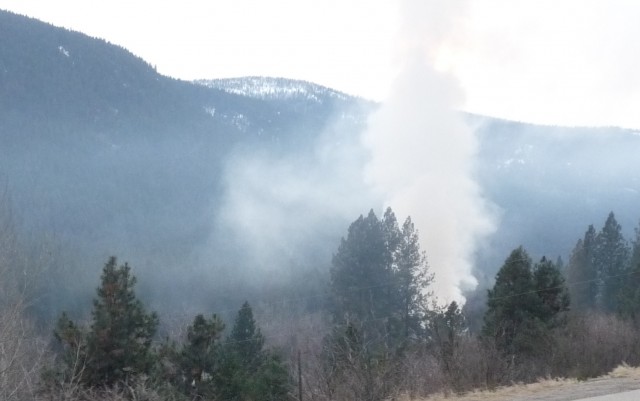Clean air day a chance for everyone to think about air quality
Individual action to protect the air and reduce greenhouse gases is the focus of Clean Air Day, which is on Wednesday, Jun. 6 this year.
Clean Air Day started out as a B.C. event in 1992, but has since become a national day. B.C. and Canada face several serious air quality and environmental issues, such as smog, fine particulates, ozone depletion and global climate change.
The B.C. Lung Association(Grand Forks-Boundary Area) is celebrating this very important day of awareness by having a booth at the Grand Forks Overwaitea Store parking lot. They will be there from 1.00 to 3.00 p.m. Pick up your free information handouts, kites and cake.
Come and Celebrate!! Any other concerns or info needed contact Michele Caskey Volunteer Director, 250-442-3055.
Tips for how you can help improve air quality
In celebration of Clean Air Day B.C.’s new car dealers have identified the following Top 10 Tips to help drivers celebrate sustainability, improve air quality and even save some money:
1. Consider a cleaner vehicle. With vehicle prices and interest rates on new vehicles hitting record lows, there’s never been a better time to reduce your emissions by upgrading to a new, more fuel efficient vehicle.
2. Participate in the BC SCRAP-IT program and help reduce greenhouse gas emissions by getting older vehicles off the road. Retire your 1995 or older vehicle and choose from a long list of incentives. Replacing a 1990 sedan with a 2009 hybrid can result in a reduction of up to 67% in greenhouse gas emissions.
3. Avoid unnecessary idling. It wastes fuel, money, stresses your engine and adds unnecessary pollution to the air.
4. Get regular tune-ups. Vehicles that are properly serviced run more efficiently, waste less fuel and produce less air pollution.
5. Take advantage of the Clean Energy Vehicle for BC incentive program. Receive up to $5000 off the pre-tax price of a Clean Energy Vehicle, including new electric vehicles, battery electric vehicles, plug-in hybrid electric vehicles, and more. Filling up on clean electricity in BC can save the average driver up to $1200 per year in fuel.
6. Make sure tires are properly inflated. Chronic under-inflation can reduce the service life of a tire by as much as 15,000 km. Canadian motorists will waste an estimated 533 million litres of fuel due to under-inflated tires this year alone. This needless fuel consumption will also release an additional 1.2 million tonnes of carbon dioxide into the atmosphere.
7. Recycle your scrap tires. Returning your old tires to a participating retailer to help keep scrap tires out of landfill and create useful recycled rubber products such as athletic tracks and playground cover.
8. Watch the lead foot. How you drive can impact how much fuel your vehicle uses, and in turn, the level of emissions. Slow down, maintain steady speeds and avoid jackrabbit starts and hard braking to use less fuel.
9. Watch your weight. Clean out the trunk, cargo areas and passenger compartments. Less weight means better mileage. Keeping an extra 100 pounds of weight in a car will reduce its fuel economy by approximately two per cent.
10. Get sleeker. Remove roof racks when not in use to reduce wind resistance, improving aerodynamics and fuel economy by as much as five per cent.
Links:






















